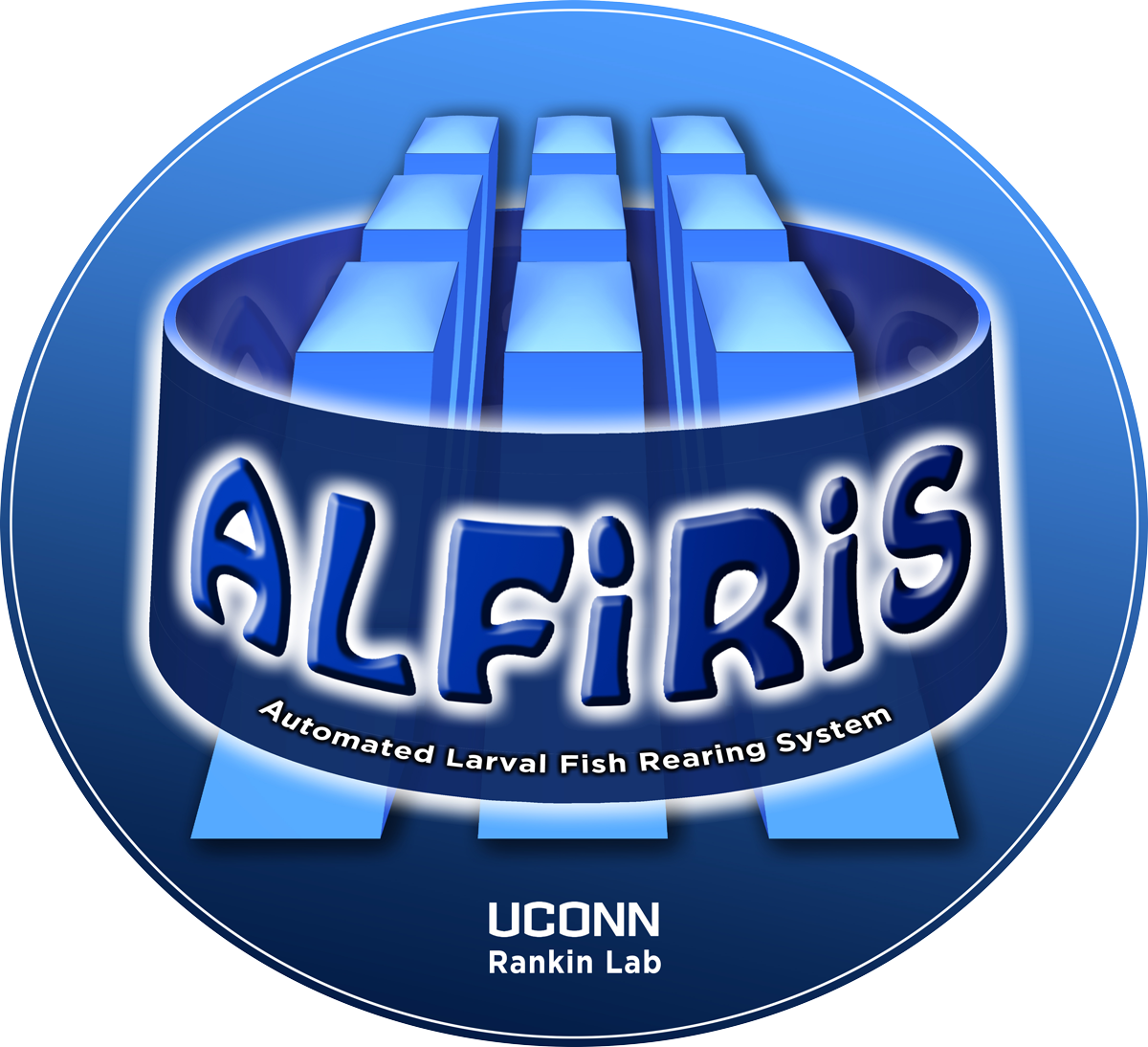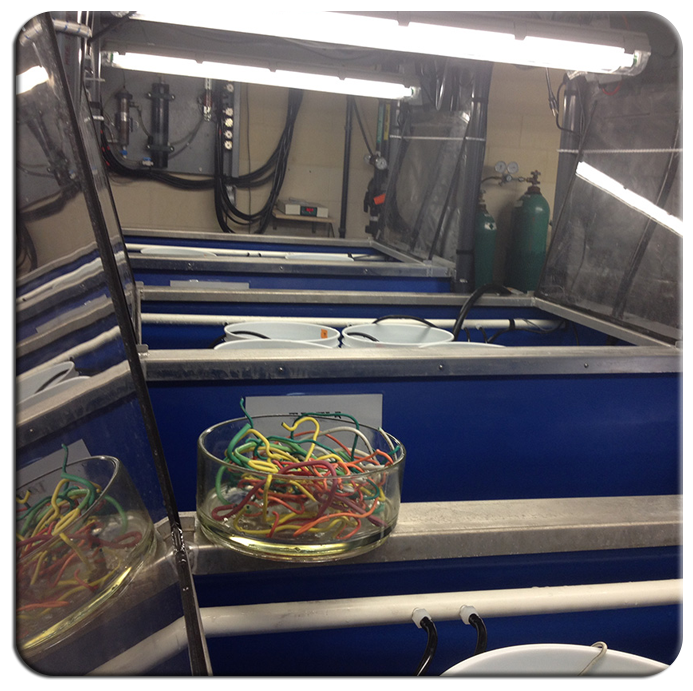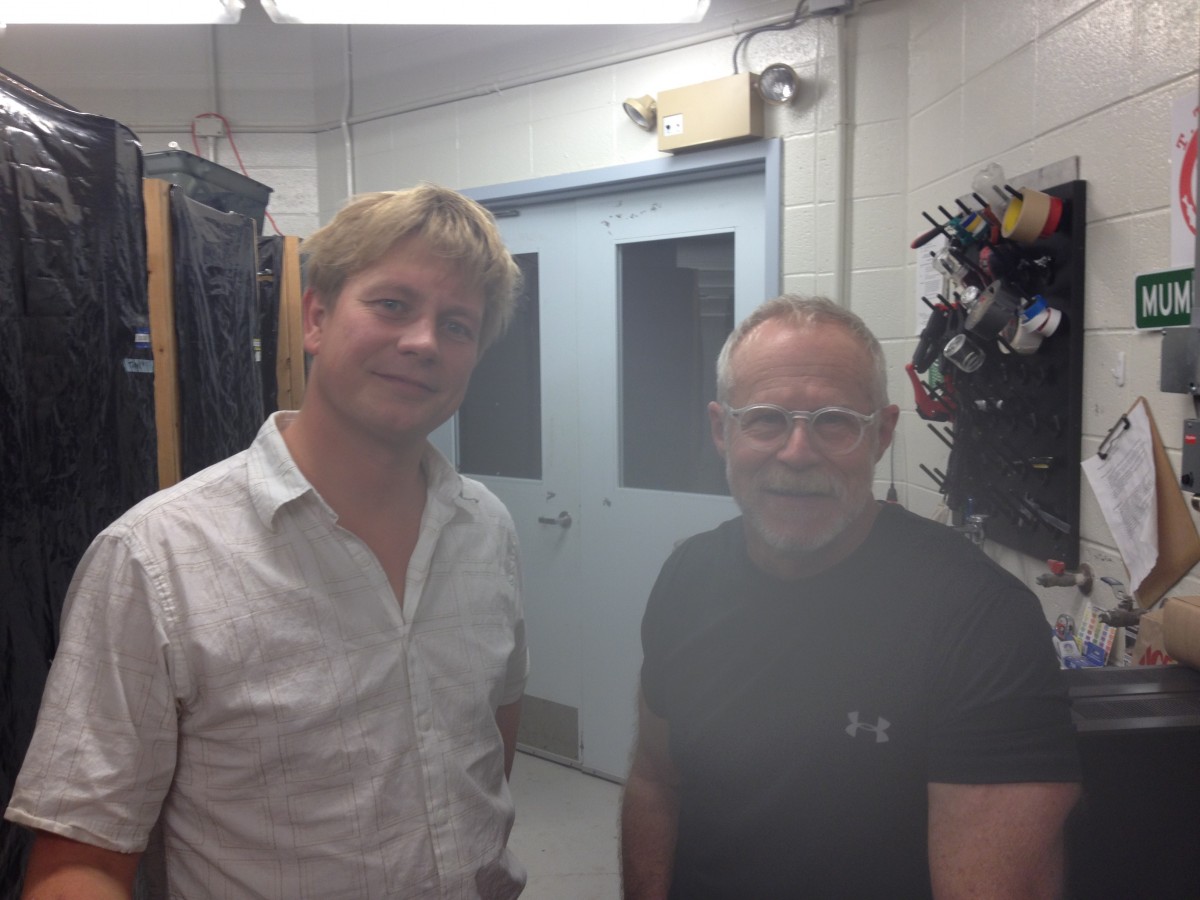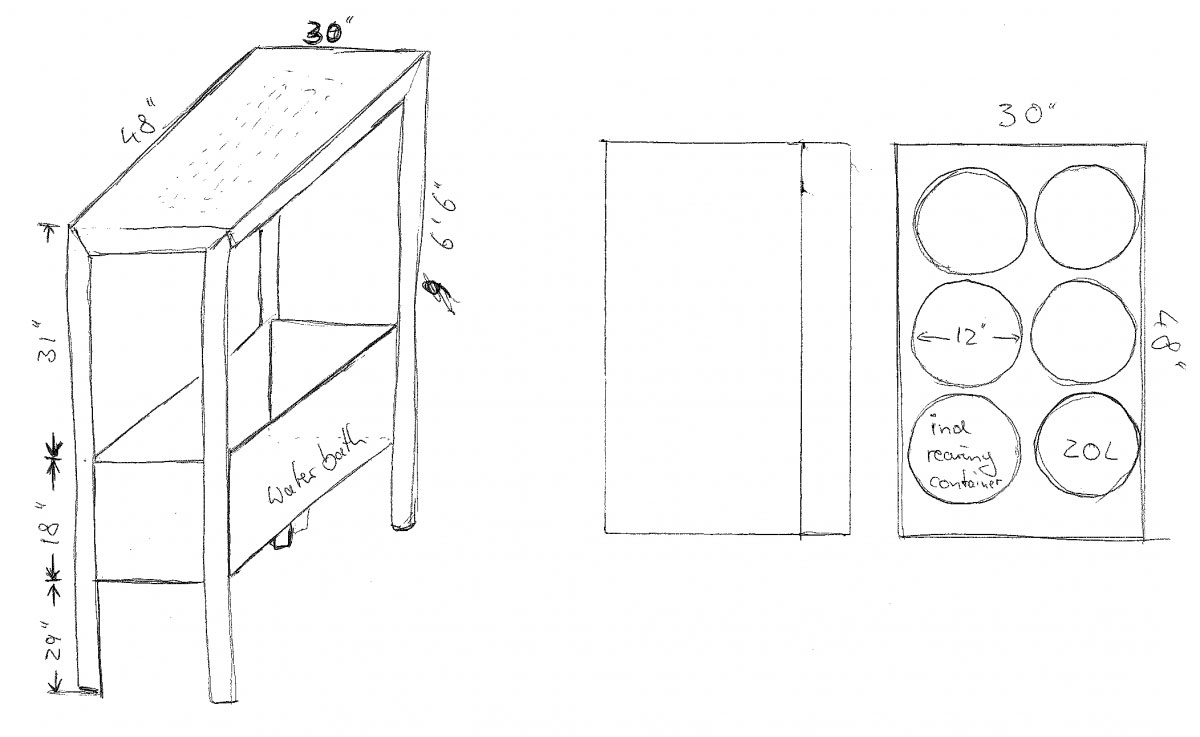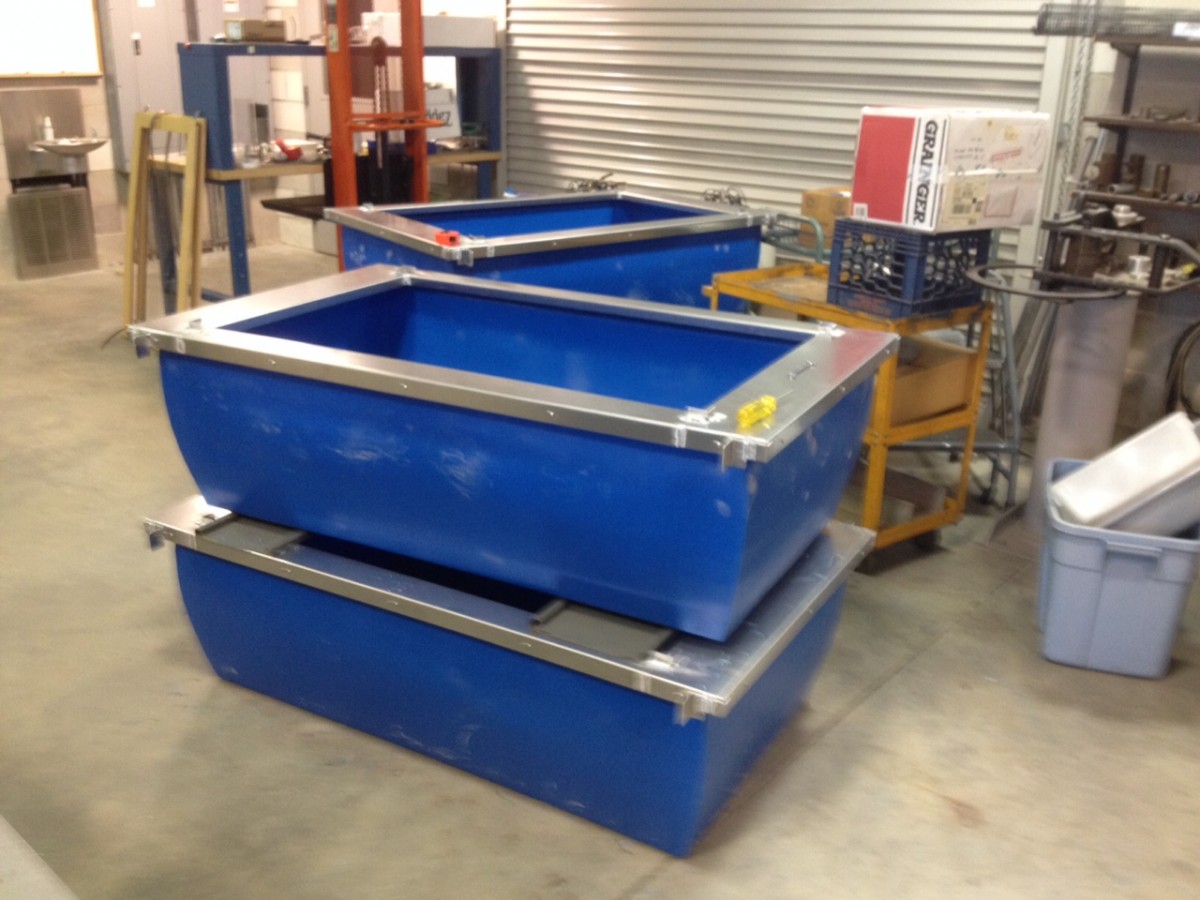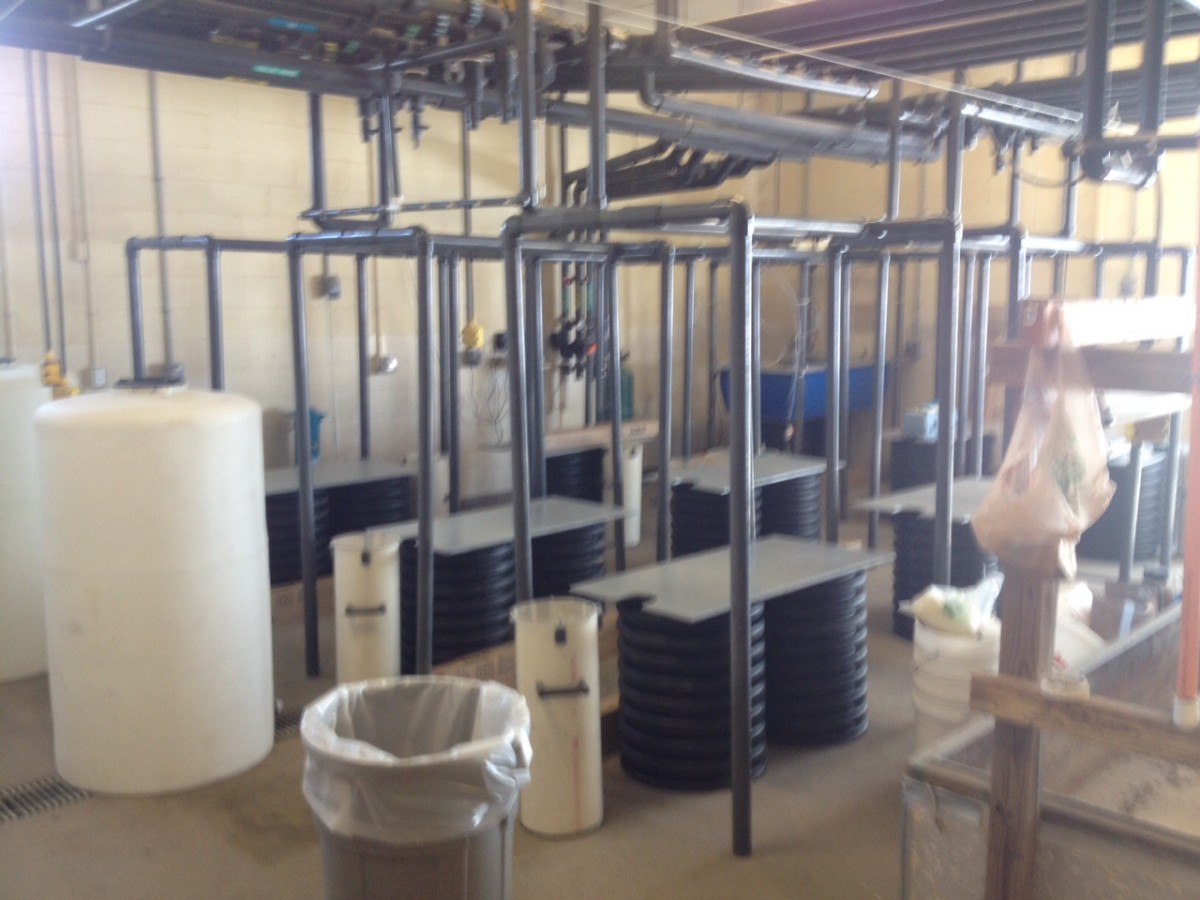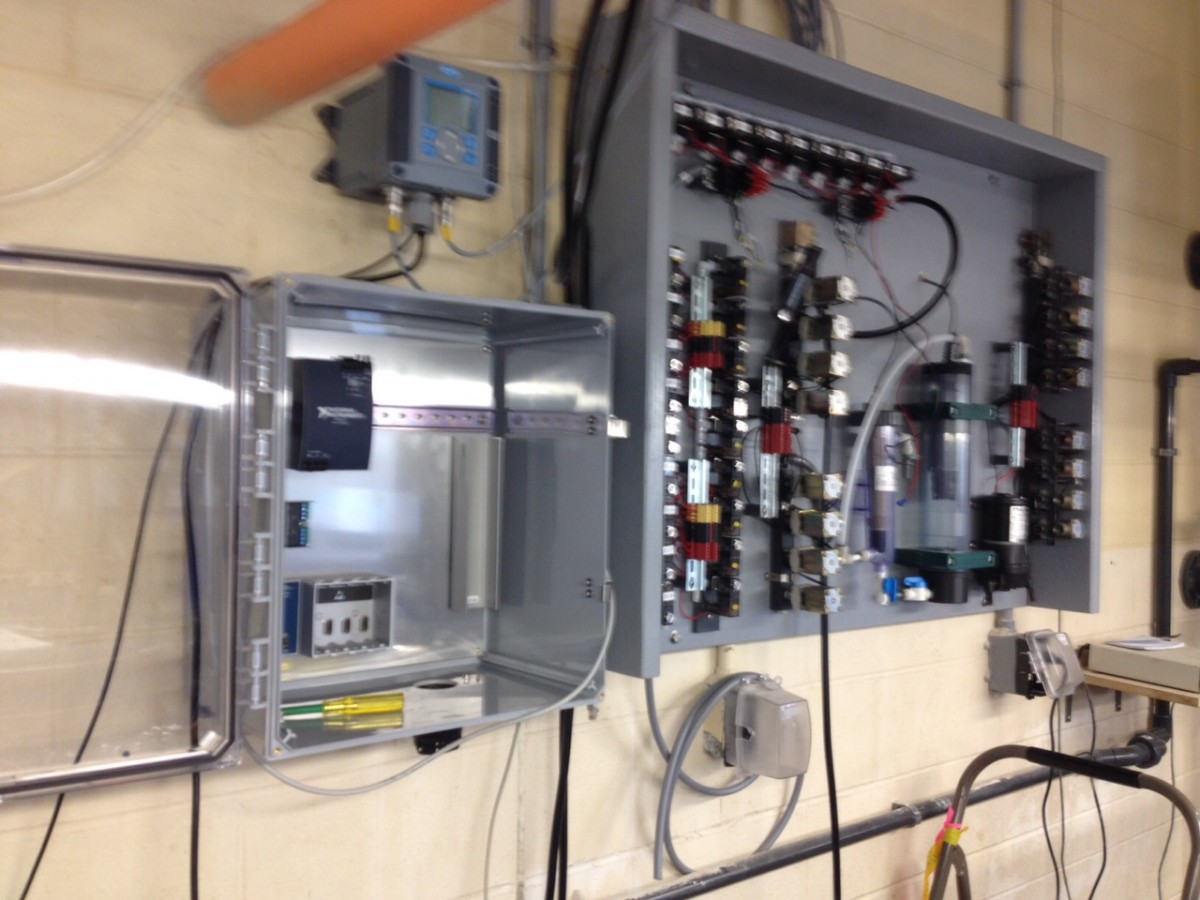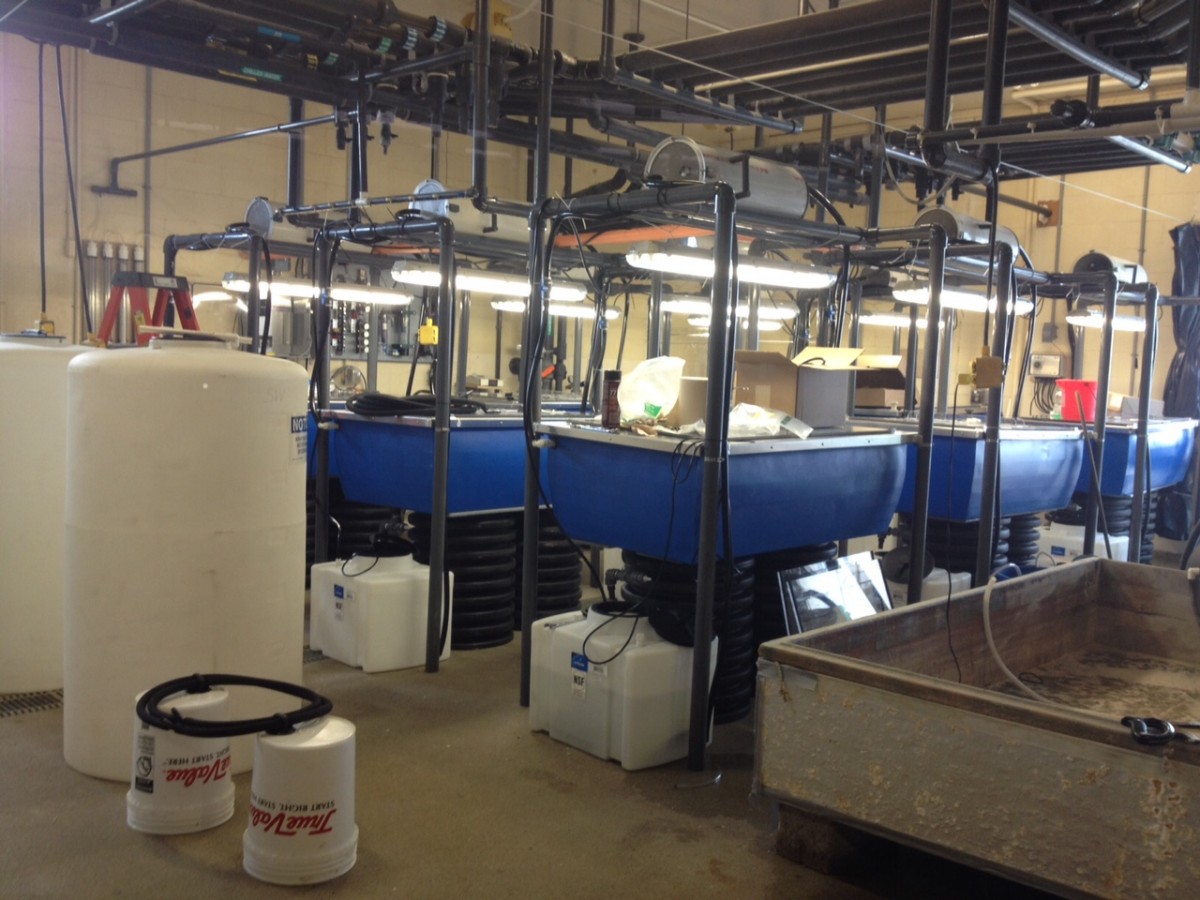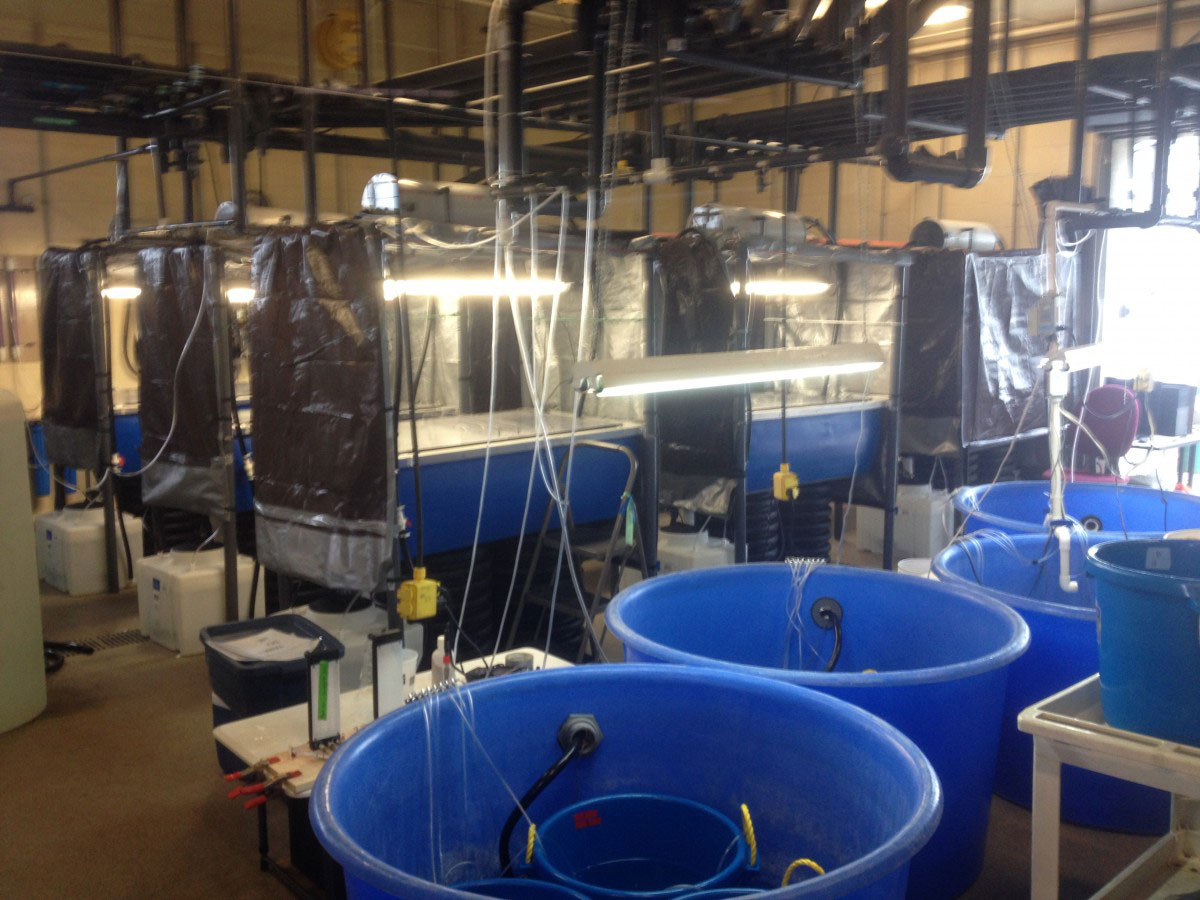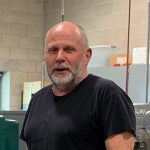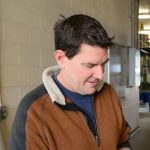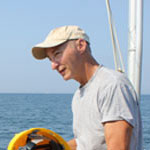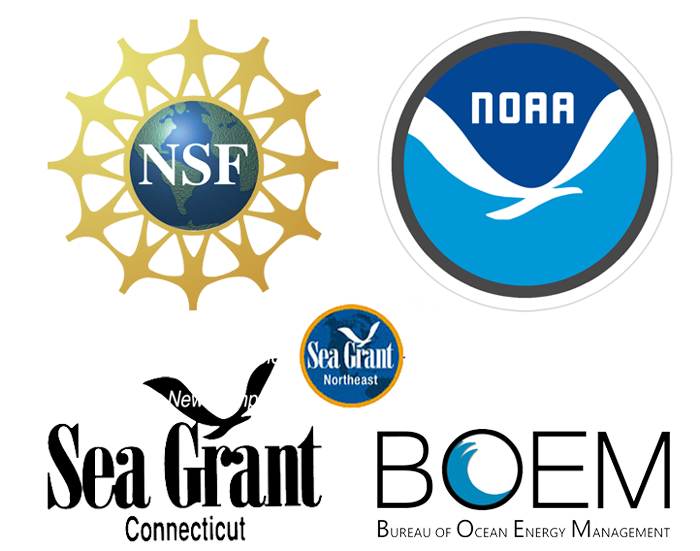Over the past years, we've built an Automated Larval Fish Rearing System (ALFiRiS) to conduct factorial experiments on the climate sensitivity of fishes.
It consists of a 3 x 3 array of recirculating units (600L/150gal) that have independent computer-control over their temperature, oxygen, and pH conditions.
We use a self-developed LabView (National Instruments) platform to sequentially monitor tank conditions via industrial-grade oxygen and pH sensors (Hach) and then control gas solenoids (air, N2, CO2) to maintain and modulate environmental conditions.
The system can apply static as well as fluctuating conditions on diel and tidal scales. Computerized temperature control allows simulating heatwaves and other non-static thermal regimes.
ALFiRiS has been used in numerous experiments over the past 6 years to conduct NSF and NOAA-funded research on the early life stages of Atlantic silversides (Menidia menidia), Northern sand lance (Ammodytes dubius) and larval and juvenile Black sea bass (Centropristis striata).
Despite its name, the versatility of the system extends to a large variety of marine organisms beyond fishes.
Acknowledgements and special appreciation
Numerous people contributed their ideas and expertise to the creation of ALFiRiS, and we owe them our deep gratitude. The sequential design was inspired by conversations with Dr. Paul Grecay. Structural build-up designs were developed and constructed by Gary Grenier and Bob Dziomba from UConn's Marine Sciences machine shop.
Charlie Woods (Rankin Lab manager) and Dennis Arbige (electrician, building manager) helped with everything from plumbing to electrical installations.
Our LabView muse and teacher is Dr. John Hamilton, without whom our routines and virtual instruments would not work as reliably as they do.
A UConn start-up grant financed the roughly $35K USD in parts and sensors, but it is the unmeasurable hard work and ingenuity of all the above and the dedication of involved graduate students and post-docs that truly made it work.
Published studies using ALFiRiS
- Zavell, M.D. and Baumann, H. (2024)
Resiliency of Black Sea Bass, Centropristis striata, early life stages to future high CO2 conditions
Environmental Biology of Fishes 107:677–691
- Zavell, M.D., Mouland, M.E.P., Matassa, C.M., Schultz, E.T., and Baumann, H. (2024)
Temperature- and ration-dependent winter growth in Northern stock Black Sea Bass juveniles
Transactions of the American Fisheries Society 153:163-179
- Baumann, H., Jones, L.F., Murray, C.S., Siedlecki, S.A., Alexander, M., and Cross, E.L. (2022)
Impaired hatching exacerbates the high CO2 sensitivity of embryonic sand lance, Ammodytes dubius
Marine Ecology Progress Series 687:147-162 | UConn Today press release
- Schwemmer, T.S., Baumann, H., Murray, C.S., Molina, A.I., and Nye, J. (2020)
Synergistic metabolic responses of embryos, but not larvae, of a coastal forage fish to acidification and hypoxia
Journal of Experimental Biology 223:jeb228015
- Murray, C.S. and Baumann, H. (2020)
Are long-term growth responses to elevated pCO2 sex-specific in fish?
PLOS One 15:e0235817 | Press release | NSF news
-
Cross, E.L., Murray, C.S.*, and Baumann, H. (2019)
Diel and tidal pCO2 × O2 fluctuations provide physiological refuge to a coastal forage fish
Scientific Reports 9:18146
- Murray, C.S.*, Wiley, D., and Baumann, H. (2019)
High sensitivity of a keystone forage fish to elevated CO2 and temperature
Conservation Physiology 7:1-12
- Baumann, H., Cross, E.L., and Murray, C.S. (2018)
Robust quantification of fish early life CO2 sensitivities via serial experimentation
Biology Letters 14:20180408
- Murray, C.S. and Baumann, H. (2018)
You better repeat it: complex temperature × CO2 effects in Atlantic silverside offspring revealed by serial experimentation
Diversity 10:69

